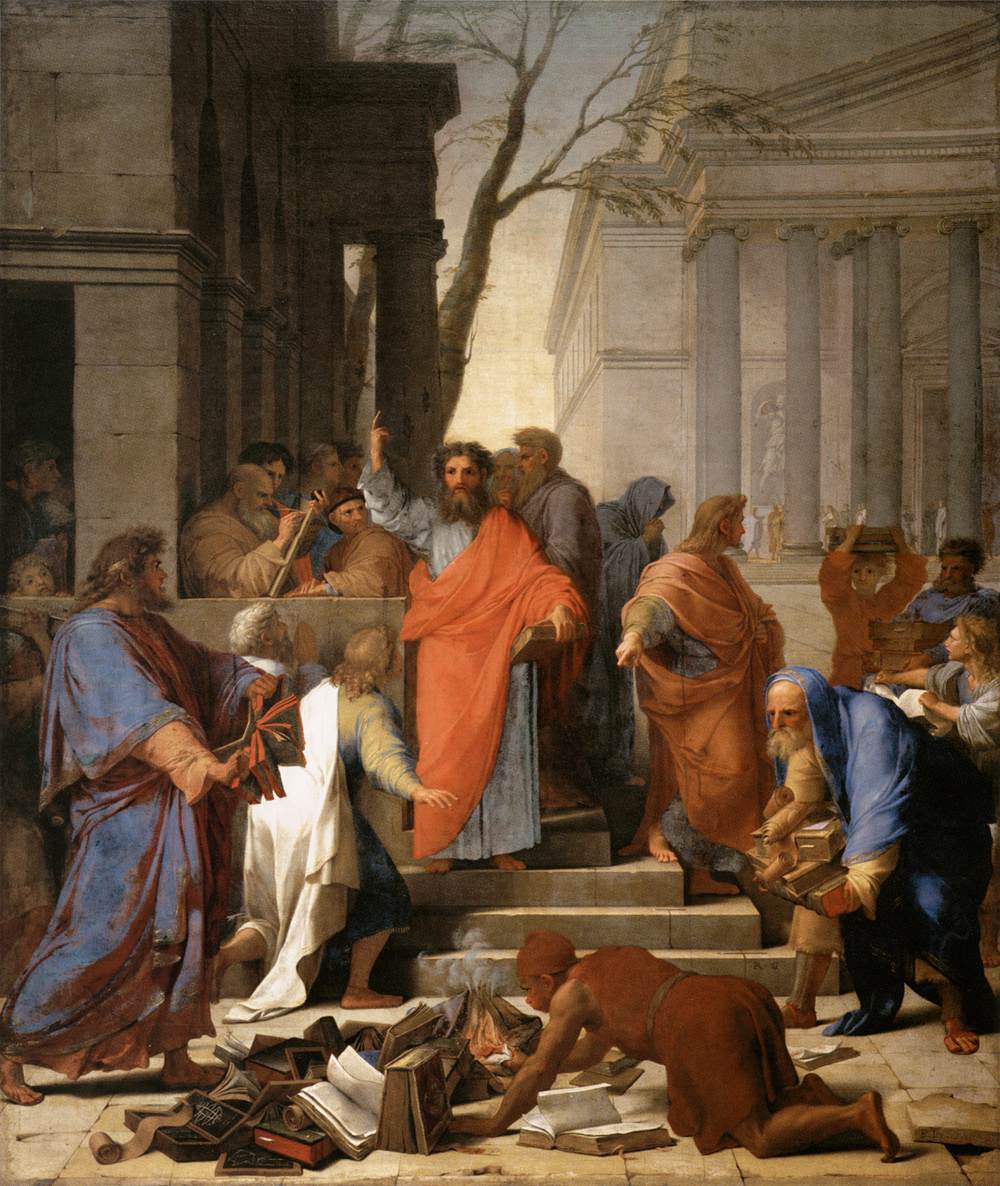May-ke it or Break it
By Caitlen Cameron
Imagine the year is 1630 and you are a budding young artist living in central Paris. You daydream about painting for the royals like Louis XIII or any one of the high standing individuals of the time. One day, you take a quick stroll through the Ile de la Cite to get some inspiration and you see Our Lady of Paris. Now during this time her interior is being renovated and you stop to admire the work. Then you overhear a bit of chatter. The designers are thinking of adding bright new colorful changes to the interior aisles and as part of that they are thinking of adding paintings starting in the spring. And the best part is, they are open to paintings from any new rising artists. You sprint home immediately, pull out your brush and paints, and start your attempt on a grand painting for the contest that would later be known as “The Mays of Notre-Dame.”
Now while you may not be a painter in the 1630s, the excitement behind the creation of the Mays was a real stir among the community of artists in Paris at the time. Before this exhibition, the only way to make it in the art world was to work for a royal. There were no MFA programs, gallery openings, or residencies. But the Saint-Anne goldsmiths corporation along with the leaders of Notre-Dame wanted to change this. Instead of just asking for great painters of the time, they decided to open their contest to anyone that wanted to apply. And the honor that went along with winning it was something that could shoot a rising star into fame.
The guild of goldsmiths pooled together money for a commission pot for one lucky painter to create an 11.5 by 9-foot painting to be ready for a reveal on May 1st of each year. This date created the nickname of “The Mays” for the paintings themselves. The painting had to depict some type of devotional scene, since it would be in the church, and the most common or well-liked subjects were those from the Acts of the Apostles. This preference expressed the the values of the Counter-Reformation, which wanted to use image to teach, to move, and to convince their viewers. Essentially their goal was to win back souls for the Catholic church through the power of images.
 | ||
| Aubin Vouet, The Freeing of St. Peter. May of 1640. Now at the Musée des Augustins, Toulouse. Public domain, via Wikimedia Commons |
Now, in the first years of the competition, the goldsmiths wanted to start off with some of the already semi-prominent artists to create a sense of excitement for the Mays and to establish a code for the works. And so among the first Mays were creations by Georges Lallemant, Abuin Vouet, and in 1643 Sebastian Bourdon, who would go on to be one of the founders of the Royal Academy of Painting and Sculpture in 1648. The Academy would serve as an entryway to hundreds of new painters and sculptors of the time that would eventually dominate the creation of the Mays for Notre Dame and the baroque style painting of Europe.
| Sébastien Bourdon, The Crucifixion of St. Peter. May of 1643. Public domain, via Wikimedia Commons |
After the creation of the Academy, the contest for the Mays was of huge interest for the pupils as well as an interesting spectacle for the public. Since the release of a new May for the church happened was at the beginning of spring, right after Easter, the church would create an elaborate celebration in return for the gift of the painting. This gave each of the selected artists something they could truly brag about among their peers. The honor was like being selected valedictorian on your high school graduation day.
Overall, 76 total Mays were created spanning the course of 78 years until the contest was disbanded during 1708 when the guild of goldsmiths mysteriously disappeared. Through those 78 years, the Mays went through their own twists and turns of ownership and displacement. During the revolution in 1789, the paintings created for the Mays were hidden among different surrounding churches, but due to their size and grandeur they were quickly discovered and confiscated. A few had already been entrusted to the Central Museum, a project would later turn into a broader museum located in the Louvre that was an exhibition space for the royal collections and works of art confiscated from emigrants and churches. The Louvre decided to give some of the seized Mays back to the cathedral in 1803, but most were still spread throughout the country.
 |
| Eustache Le Sueur, The Preaching of St. Paul at Ephesus. May of 1649. Now at the Louvre. Public domain, via Wikimedia Commons |
Out of the 76, 40 paintings were shared among the museums, 25 paintings were lost or burned during the riots, and only 13 remain displayed today in Notre-Dame. Today they mostly hang inside of chapels, but originally they would have hung above the arches on the ground floor of the nave and above the cannon’s seats in the choir. To imagine this today, we can look at the surviving paintings and imagine the color and drama they would have brought to the space. For the original artists, the creation of such a large painting was filled with devotion and excitement, and their work, while not all together, will be remembered through the ages.
Chloé d'Architrave, "Admirer la peinture française (1): les Mays de Notre-Dame," Hypotheses. Last modified March 23, 2018.
Marc Jordan. “May of Notre-Dame de Paris.” Oxford Art Online
Comments
Post a Comment